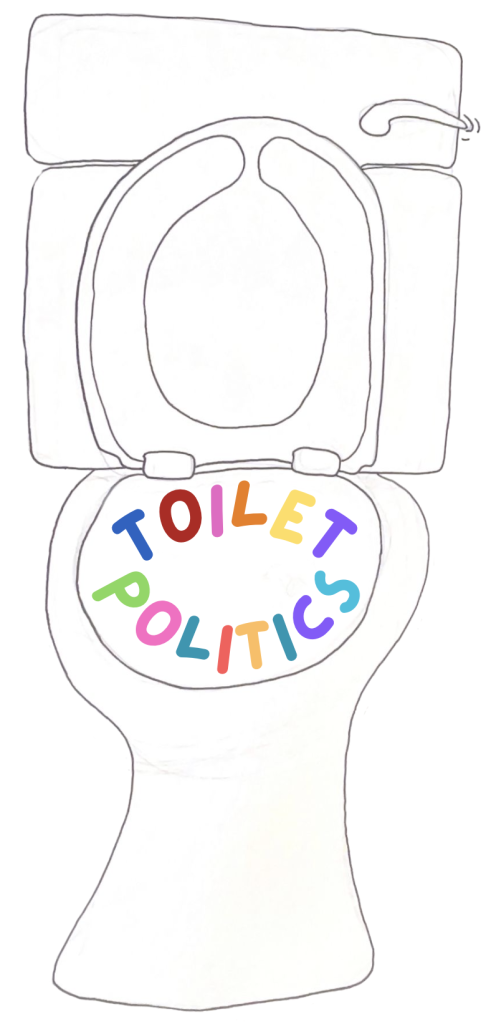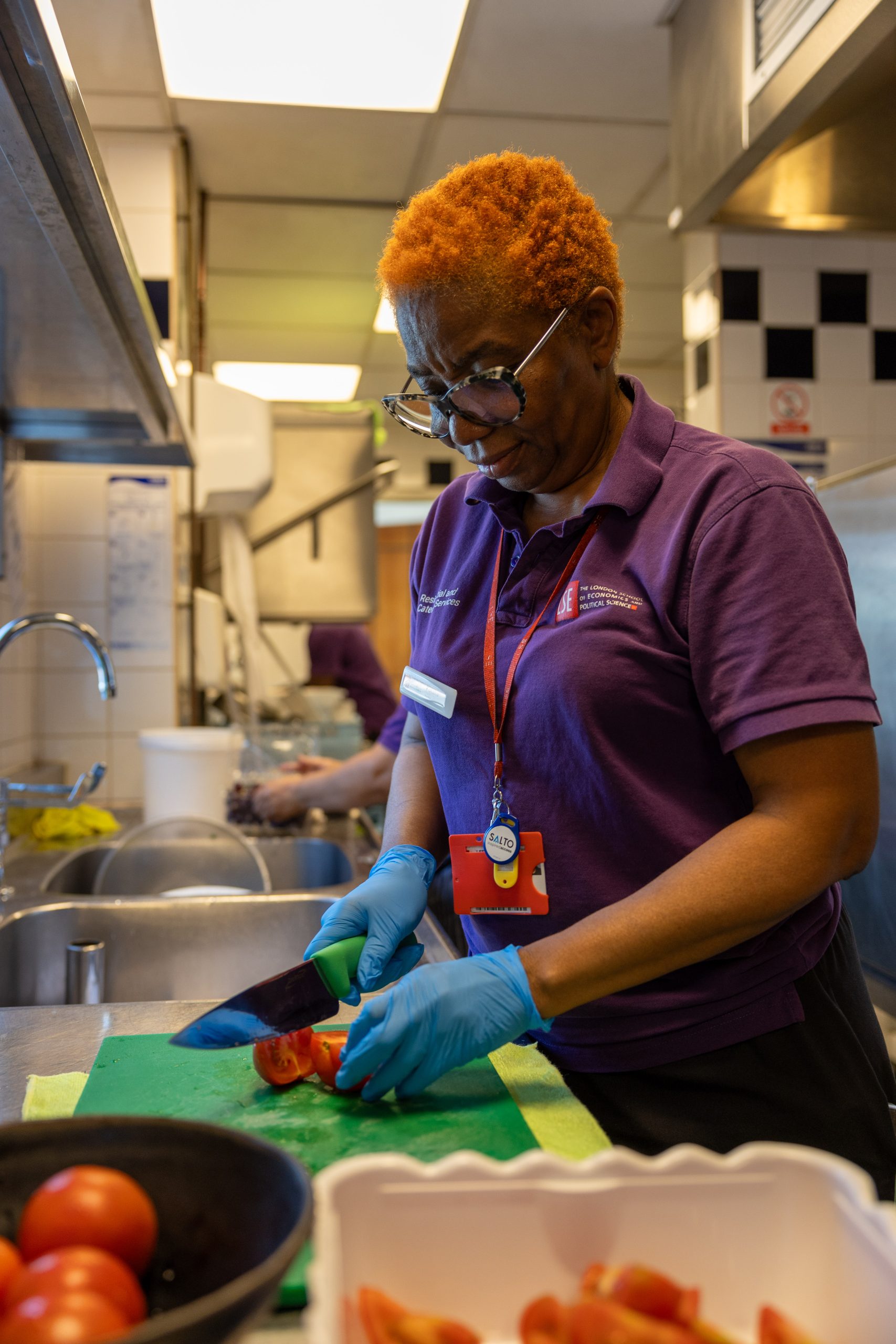By Anouk Pardon
Public restrooms are universally unloved. They involve horrible odours, long queues, and – far too often – unpleasant surprises. Yet, when nature calls and there is no restroom in sight, we would gladly embrace all of these discomforts rather than consider the alternatives. But these facilities are more than just conveniences that we avoid talking about. In fact, public toilets are microcosms of much larger political and societal phenomena. It’s time to break the silence and acknowledge that they have always been the invisible, smouldering battlefields of social justice issues and interpersonal politics.
My friend first alerted me to how these seemingly mundane facilities can be a stage for the more practical aspects of diplomacy. During her internship at an international organisation, she observed that conversations within restroom confines were remarkably candid, devoid of the usual hierarchical constraints and often hold more significance. What we termed toilet diplomacy had already been documented in a 2006 Guardian article that reported on an unusual encounter at the ASEAN Regional Forum. According to the newspaper, the foreign ministers of Japan and China “ran into each other on the lavatory” and were able to engage in “a meaningful discussion […] at the toilet”.
What makes these restroom encounters so uniquely powerful? According to sociologist Erving Goffman, public restrooms serve as the backstage to our public performances: “here the performer can relax: he can drop his front: forgo speaking lines, and step out of character”. To apply this to our tough negotiators: toilets make it impossible to conceal our undignified needs, which fosters a humbling sense of unity and might make reaching a compromise easier. I imagine that collective suffering inspired by the desolate state of the toilets also helps. Human connection thrives in times of shared pain, and there is undoubtedly no better conversation starter than a good complaint.
Nowhere is this unity more evident than in female public restrooms. During turbulent party nights, it is paradoxically the epitome of dirtiness – club toilets – that become a shining sanctuary. Girls freely share mascara and advice, empathetically listen to tragic stories, and exchange compliments. The restroom stalls become a canvas for weirdly poetic and relatable words, often offering a glimpse into deeply personal understandings of womanhood. The posters on stall doors advising on how to handle harassment and where to seek help in times of sexual assault remind us that this is a safe space. The writings and the posters are of silent form of conversation that cater to a same-sex audience.
As public bathrooms represent the ultimate sex-segregated spaces, it is no wonder that they have increasingly become the battleground of gender identity debates. Videos on social media capture heated discussions in public restrooms concerning who is allowed in which toilets and who is not. Some see female bathrooms as sacred and safe spaces, while others view using the restrooms of their chosen gender as a self-affirming act or believe in the complete dissolution of sex-segregated bathrooms. Do we have to rethink sex-segregated bathrooms? While many diverge on the issue, this debate reminds us that even the most unassuming places can become politicised.
But the story is much older than that – public toilets have a history of being subject to political and social issues. Especially in the past they have mirrored inequality. Before the Civil Rights Act of 1964, the Jim Crow laws mandated racial segregation which extended to public toilets. African-Americans were frequently allocated distant and inferior facilities. The film Hidden Figures, which depicts the story of the black female mathematicians at NASA who helped sending the first American into orbit in the early 1960s, includes a fictional yet symbolic scene that reminds us of these struggles. Katherine Johnson, played by Taraji P. Henson repeatedly arrives late for work because she has to run across campus to find a “coloured” bathroom. When her white boss Al Harrison, played by Kevin Costner, discovers this, he has the only valid response to this issue by dramatically knocking down the “Colored Ladies Room” sign and delivering the very visual and poignant line: “Here at NASA, we all pee the same colour.”
Similarly, the scarcity of female public toilets also roots in women’s past exclusion from the public sphere. During the Victorian era, women were expected to be homemakers, making public toilets for them unnecessary. To this day, women are still only provided with half as many facilities as men. Furthermore, especially in places of decision-making, women’s toilets are also situated further away than men’s. As Caroline Criado Perez demonstrates in her book Invisible Women, this is exacerbated by the fact that women on average take longer than men to use toilets due to factors like pregnancy, menstruation, and the higher likelihood of being accompanied by children. Adding the fact that women cannot make use of space-efficient facilities like urinals also explains why the infamous long queues are mostly found in front of women’s bathrooms.
However, such issues receive little attention in policy-making due to them being deemed a societal taboo. The toilet is often being seen as a source of embarrassment. Disgust and dirt are key themes that feature in this sentiment. When Hillary Clinton made her way back to a presidential debate after haven taken a restroom break, Trump was prompted to shout “that’s disgusting.” While this sort of rhetoric is most commonly observed in kindergartens, it also underscores the idea that polite society generally avoids conversations about this topic. One goes to “the powder room”, “for little girls” or is “excused for a second”, but as soon as someone announces that he or she has “gotta pee”, we immediately assume that they have no manners. In fact, much of your socioeconomic background can be gathered from the way you announce your intention to go to the bathroom.
Your access to bathrooms or lack thereof often correlates with your socioeconomic class. Take homeless people who are already the most vulnerable in society and struggle to find places that help them maintain hygiene on a daily basis. The people that regularly clean toilets often also come from lower-socioeconomic backgrounds and have little access to better paid jobs. They are crucial in maintaining these essential facilities, but the stigma surrounding their jobs often makes their service go unseen and undervalued.
In my opinion, we need to appreciate public toilets more and acknowledge that these humble facilities hold a unique place in the fabric of our society. While visiting one can undeniably be “adventurous”, public toilets can also be places of surprising beauty, whether it’s because you ran into your negotiation partner and were able to finish some business, or because you were showered with comforting words from complete strangers. They are, however, also emblematic of the societal inequalities and challenges we still need to overcome. While toilets can certainly stimulate meaningful discussions, we also need to engage in more meaningful discussions about them. It is time we shine a spotlight on them, addressing both the dirt and the dignity.



